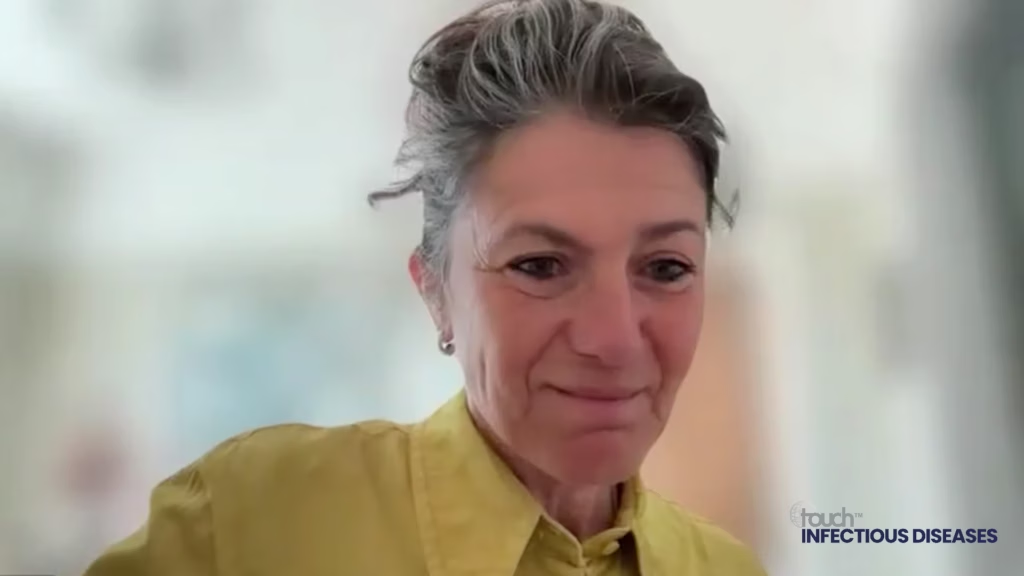In this touchINFECTIOUSDISEASES interview, we were delighted to speak to Dr Monica Gandhi (University of California, San Francisco, CA, USA) about the current treatment paradigm for HIV treatment. In addition, Dr Gandhi summarized the evidence so far from clinical trials for HIV treatment, and touched upon what questions remain unanswered.
The presentation, ‘Advances in HIV Treatment Strategies‘, was presented at the Conference on Retroviruses and Opportunistic Infections (CROI) 2023, 19–22 February 2023.
Questions:
- Could you give us a brief overview of the treatment paradigm for HIV? (0:17)
- What have previous clinical trials taught us about treatment of HIV and what questions remain unanswered? (2:48)
Disclosures: Monica Gandhi has received grant/research support from the NIH.
Support: Interview and filming supported by Touch Medical Media Ltd. Interview conducted by Atiya Henry.
Filmed as a highlight of CROI 2023.
Transcript:
Could you give us a brief overview of the treatment paradigm for HIV? (0:17)
My name is Dr Monica Gandhi. I’m a professor of medicine and infectious disease doctor at UCSF (University of California, San Francisco, CA, USA), and I also direct the Ward 86 HIV clinic at UCSF.
I was tasked for the new investigators session at CROI to give an overview of all of the overall treatment strategies and I divided it into three sections that I think are the most relevant. One is, what are we doing in treatment naïve or suppressed patients? The second is, what are our options for HIV resistant patients, patients who have a lot of resistance across multiple classes of drugs? The third is, what new strategies we can think of for long-acting antiretroviral therapy? Just briefly, in each of those categories, for suppressed or naïve patients, integrase inhibitors have been our first line for a while, but we know how potent they are, and what a high genetic barrier to resistance they have. So, I wanted to focus in on some of the recent data and some of their complications. We’re getting more and more abstracts and data about weight and metabolic changes with the integrase inhibitors – a lot of the data from this meeting itself. To put a lot of data together, essentially the integrase inhibitors are great drugs, but they do seem to be associated with more weight gain than some of the older regimens, which are actually more associated with weight loss. So, if we think about efavirenz and TDF being more associated with weight loss, TAF and integrase inhibitors are more associated with weight gain. The second category is, what do we do with resistant patients? To just put it really simply, I task the audience to memorize some integrase inhibitor and NNRTI and NRTI mutations that I think every HIV provider should know. Then in our highly resistant patients – patients who have viral resistance mutations – we have now four classes of medications that we can use: fostemsavir, maraviroc, lenacapavir and ibalizumab. These are all medications we can use in our highly treatment experience resistant patients. Finally, in long-acting antiretroviral therapy there have been huge advances, a lot of them at this meeting: lenacapavir every six months as a subcutaneous injection, either with oral medications or with broadly neutralizing antibodies. And then importantly, cabotegravir and rilpivirine are both long-acting medications we can give, even to viremic patients, if we do it in a controlled setting.
What have previous clinical trials taught us about treatment of HIV and what questions remain unanswered? (2:48)
We’re in a very exciting time for HIV treatment, we’re in 2023, and a lot of what I summarized in this talk was all of these advances. These advances are in long-acting antiretroviral therapy, giving injectable medications every four or eight weeks. And that’s all you need, combination treatment regimen, and then go on your day in terms of not needing to take a pill every day. But what do we need to still learn? Well, there are new, long-acting injectable medications like lenacapavir that don’t have a partner. We don’t have an every six months partner to put with lenacapavir. Lenacapavir can never be alone – that was some of the data that I showed in this talk, that if it’s not supported by other medications, it actually has a relatively low genetic barrier to resistance. So it has to come accompanied by another medication, and right now we don’t have that every six month partner. There was data presented yesterday at CROI about an islatravir implant. It’s kind of exciting, but very much nascent, very much in development, not yet in clinical trials. So what do we need next? We need long-acting, easier to take, maybe every six months, every year, HIV medications. That’s going to be the new frontier in HIV medicine.
Subtitles and transcript are autogenerated









